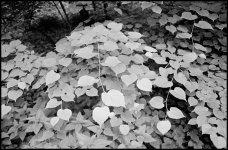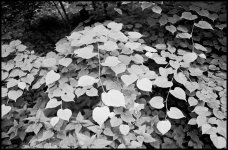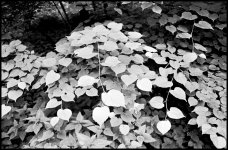vicmortelmans
Well-known
Hi,
Someone willing to share some b&w postprocessing experience?
My workflow is to shoot mainly b&w film, develop at home and scan the negatives for further processing, web publication and digital printing. I'm fine-tuning my workflow and just published some results here:
http://users.telenet.be/vicmortelmans/fts/processingexperiment/processingexperiment.html
This shows the results for three postprocessing systems:
1) manual postprocessing using the curves tool in the GIMP
2) automatic postprocessing by Vuescan
3) automatic postprocessing by my own algorithm (which I developed mostly out of interest for maths and a little programming)
For illustration, I took three different pictures.
Feel free to have a look and comment on which result you like best.
If you can, please have a go for yourself on the raw image (can be downloaded from the same page), using your own postprocessing tools or techniques, and share your result.
What's also of interest for me, is you idea on the quality of the raw image (which is a combined result from development and scanning parameters).
Groeten,
Vic
PS. if you happen to have some mathematical insight in postprocessing algorithms that are commonly used in tools like Vuescan or other, I'd appreciate to hear about this, so I can further finetune my own postprocessing tool
Someone willing to share some b&w postprocessing experience?
My workflow is to shoot mainly b&w film, develop at home and scan the negatives for further processing, web publication and digital printing. I'm fine-tuning my workflow and just published some results here:
http://users.telenet.be/vicmortelmans/fts/processingexperiment/processingexperiment.html
This shows the results for three postprocessing systems:
1) manual postprocessing using the curves tool in the GIMP
2) automatic postprocessing by Vuescan
3) automatic postprocessing by my own algorithm (which I developed mostly out of interest for maths and a little programming)
For illustration, I took three different pictures.
Feel free to have a look and comment on which result you like best.
If you can, please have a go for yourself on the raw image (can be downloaded from the same page), using your own postprocessing tools or techniques, and share your result.
What's also of interest for me, is you idea on the quality of the raw image (which is a combined result from development and scanning parameters).
Groeten,
Vic
PS. if you happen to have some mathematical insight in postprocessing algorithms that are commonly used in tools like Vuescan or other, I'd appreciate to hear about this, so I can further finetune my own postprocessing tool





